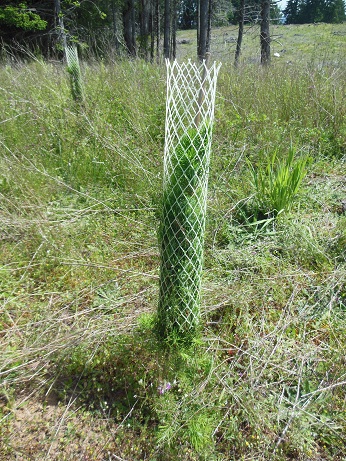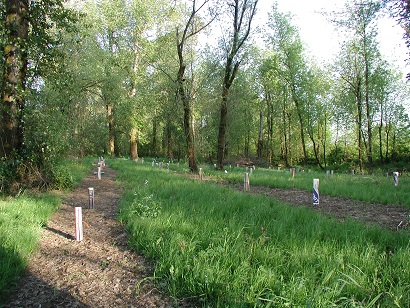Brad Withrow-Robinson, Forestry & Natural Resources Extension agent for Benton, Linn and Polk Counties.
It is shaping up to be another dry year. Writing this in mid-month, we have seen unusually dry air and winds, creating fire conditions not usually seen until early summer. We will likely see temperatures in the 80s and are under red-flag warnings last weekend. In mid-April! We could luck out, and get some serious precipitation in the next few weeks, but don’t count on it.
We know “you can’t change the weather”. But there are a few things under our control. Here are some things to do in the face of a dry year.
Fire Prevention
ODF reports an unusually high number of fire starts this month. The main cause has been back yard debris burns.
A thing to do: Do not set any debris fires this season (unless we get a significant weather change). Instead, plan to cover piles and wait burn this fall after the rains start.
Another thing to do: Tell your neighbors about your choice to not burn now, and encourage them to do the same. After all, an escaped burn next door is a very threatening fire.
Yet another thing to do: Start taking fire season precautions now when working in the woods. Carry your fire tools while working in the woods, doing storm clean up. “Better late than never” not a good strategy here.
Fire Preparedness
The Labor Day fires created an awareness among residents of western Oregon about the potential of major fires. The Extension Fire Program has created Fire Aware. Fire Prepared., a 7-part series to help individuals and communities begin the work of being better prepared for wildfire.
A thing to do: Watch the webinar series. It is underway, and all previous sessions are available by recording at the Fire Program’s Online webinar guide. https://extension.oregonstate.edu/fire-program/online-webinar-guide .
Another Thing to do: Take the preparedness actions presented in a to do list at the end of each session. These include actions to harden your home against fire, as well as beginning to coordinate with neighbors.
Yet another thing to do: That thing about coordinating with neighbors. Encourage your neighbors to watch the Fire Aware. Fire Prepared. webinar series and begin a neighborhood planning process.
Seedlings
This is likely to be rough year for new plantings. Effective weed control will likely be more important than ever. There may still time to touch up your weed control around your seedlings. Some weed control resources are here.
A thing to do: Check the weed situation in young plantings if you have them. Treat if needed. Be careful if using herbicides, as seedlings become more sensitive to spray when they come out of dormancy, as described in this post.
Fire wood
As you do your winter storm clean up and piling remember that this is an excellent time to make firewood. Firewood is best dried quickly, so early summer is great. Unlike those precious boards you mill up for a “future project” which should be gently dried, firewood benefits from harsh drying conditions.
A thing to do: Cut wood early in the season and stack it loosely to catch the dry summer breeze. This timely effort will help it dry quickly and burn cleaner in the winter.











